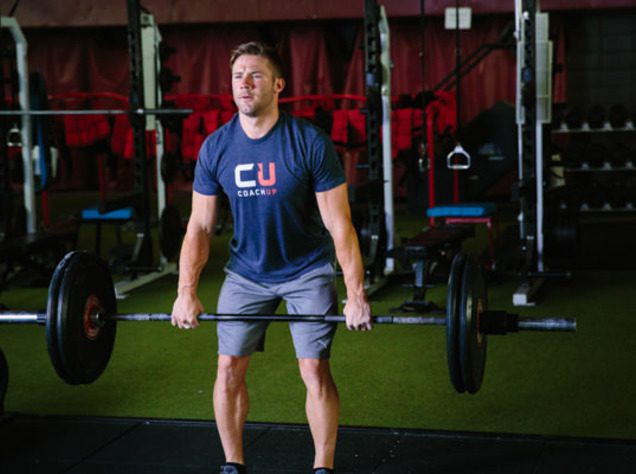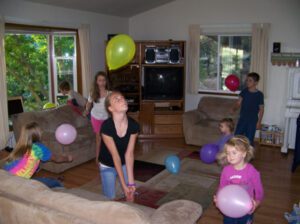Traditional powerlifting workout plans are associated with massive muscles and head-turning aesthletics, but they are specific to their sport for a reason. Building all of your strength through a powerlifting plan can become counterintuitive over time. Athletes must possess strength and power, but there are other ways to develop those traits than through exclusively push and pull lifts. Traditional lifts such as bench, squat, deadlift, and cleans do have a place in a functional strength training regimen, but they cannot be the proprietary focus. Our goal today is to explore some of the pitfalls of traditional power lifts and emphasize the importance of a well-rounded strength training program.
What are some drawbacks of traditional powerlifting for athletes?
Limited functional strength
Traditional powerlifting—on an amateur level specifically—isolates specific muscle groups and often neglects important stabilizer muscles. While this can help athletes develop impressive-looking physiques, it doesn’t necessarily translate to enhanced functional strength on the field. Athletes need a broader range of strength, one that’s applicable to the dynamic and unpredictable nature of their sport. Neglecting exercises that engage core muscles, stability, and functional movement patterns can lead to injuries and a lack of efficient motion on the field.
Reduced mobility
Athletes require flexibility and mobility to perform. Overemphasis on traditional powerlifting workouts can lead to decreased range of motion and tight muscles. This limitation can hinder an athlete’s ability to change direction quickly, react to unpredictable movements, and execute sports-specific skills with precision. In sports, mobility is often more critical than sheer muscle mass.
Imbalanced muscle development
Powerlifting programs often prioritize certain muscle groups over others. For instance, they may heavily target the chest, biceps, and quadriceps, while neglecting muscles like the hamstrings, glutes, and posterior chain. Such an imbalance can lead to posture issues and, more importantly, an increased risk of injury. Athletes need balanced muscle development to ensure proper support for their movements and to prevent overuse injuries.
Inefficient use of energy systems
Athletes require a blend of aerobic and anaerobic fitness. Traditional powerlifting workouts generally focus on short bursts of high-intensity exercise, neglecting endurance in training sessions. While muscular endurance and aerobic capacity are crucial for many athletes, they often take a back seat in traditional lifting programs.
Lack of sport-specific training
Traditional lifting movements are not designed to replicate the demands of specific sports. Athletes benefit most from exercises that mimic the movements, intensity, and demands of their game. When workouts primarily revolve around bench presses, curls, and leg extensions, they may not translate effectively to on-field performance. Sport-specific training—including agility drills, plyometrics, calisthenics, and functional movements—should be prioritized by athletes.
Size and strength will become increasingly important as you advance through different levels of competition. The objective here is not to deter you from the weight room or entice you to neglect strength training. Rather, the hope is that you will adopt a well-rounded strength training regimen focused on making you a better overall athlete.

With our 100% money-back guarantee and vetted coaches, anyone can achieve their full athletic potential. CoachUp is the safest and easiest way to find a coach for personalized training. Find your perfect coach today and become the athlete you want to be!
How useful was this post?
Click on a star to rate it!
Average rating 4.3 / 5. Vote count: 13
No votes so far! Be the first to rate this post.





One Response
What legitimate powerlifting program would (as you noted above) prioritize certain muscle groups over others. >“For instance, they may heavily target the chest, biceps, and quadriceps, while neglecting muscles like the hamstrings, glutes, and posterior chain…”<
There is Not a legitimate powerlifting routine or program in the world that would encourage something as ridiculous as that.
No legitimate power lifter would put extra effort in on his biceps and at the same time would neglect his posterior chain!!
Now, sometimes “would be” bodybuilders neglect body parts and/or movements in their vain attempt to gain mass or spring break cuts…
As far as powerlifting goes, (specifically) anyone with a respectable lifting foundation, needs to prioritize and perfect their technique on the big 3 lifts. There is simply not enough time in the day or the week for the working class lifter to get involved in too many secondary activities that will ever enhance their numbers on the platform and pay off on meet day.
Olympic lifting is a completely different animal. But, technique is still a top priority.
Recovery is by far the BIGGEST obstacle any lifter faces.